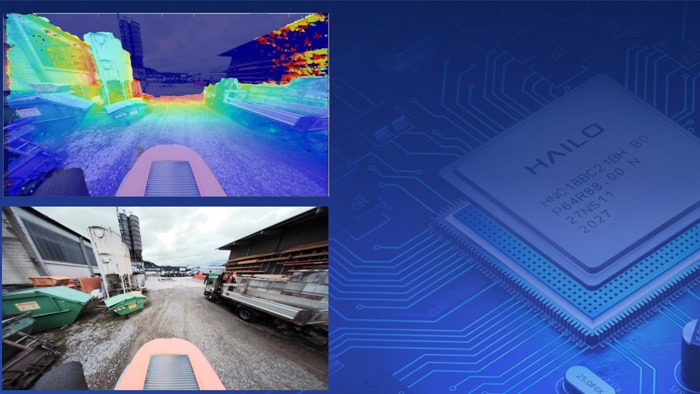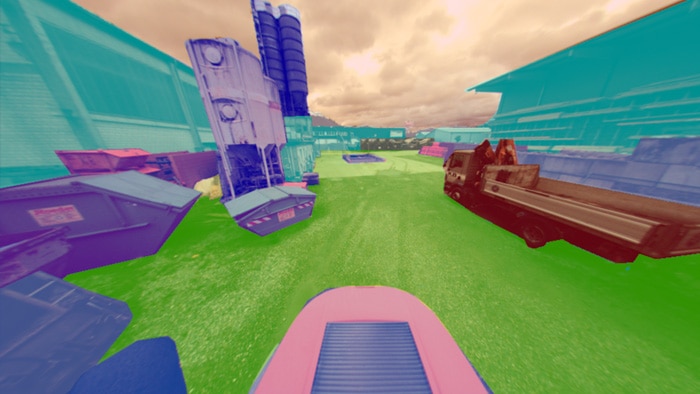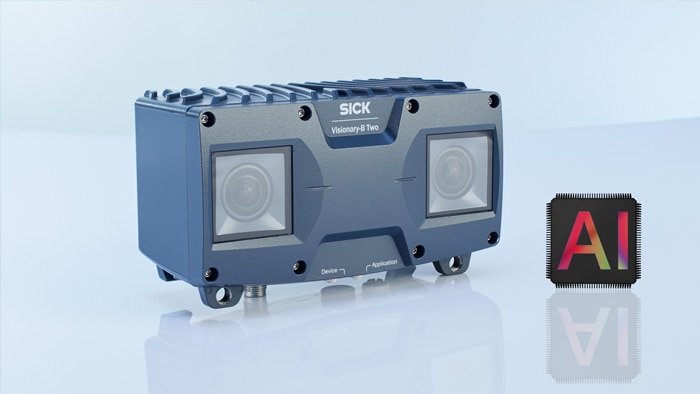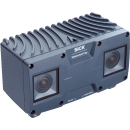In an industrial landscape where logistics and outdoor applications are becoming increasingly autonomous, a robust edge-based software solution is essential. How can one develop an autonomous perception sensor with cutting edge on-device AI capabilities? SICK showcases this by integrating Hailo’s AI processor into its Visionary-B Two vision device, further enhancing embedded software intelligence in the automation industry.
On-device artificial intelligence for embedded vision solution – empowered by Hailo AI
Centralized vs. embedded approach
As industrial operations move towards full autonomy, the demand for computing power, particularly for AI-based software applications, surges. One common solution is to offload computing tasks to external industrial PCs (iPCs) equipped with GPUs, so called a centralized approach. However, what if AI applications need to run directly on the device? This presents a significant challenge, as increased computing power generates more heat, limiting the device’s operating temperature range—a critical factor in industrial settings. Additionally, the total cost of ownership for on-device solutions must be considered.
Expertise from a high-performance AI leader
This is where Hailo’s unique expertise comes into play. Hailo, a leading manufacturer of high-performance AI processors, designs solutions to run advanced machine learning applications at the edge. This collaboration boosts SICK’s on-device AI capabilities. Hailo’s low-power AI computing fits seamlessly into the on-device architecture of SICK’s sensor autonomous perception portfolio by first showcasing it with vision-based products.
On-device programming with 3D vision camera and AI Accelerator
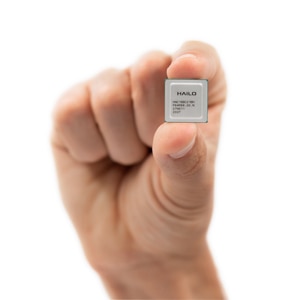
In October 2024, the first product of this collaboration hits the market: a 3D snapshot device featuring the Hailo-8 AI accelerator. The aim of this variant is to allow users to natively program on the device while leveraging the Hailo AI Accelerator and its software tools. Key application areas include logistics and outdoor automation. Software partners of SICK and Hailo are already reaping the benefits of this technology in various pilot projects, developing AI-based applications. Both SICK and HAILO are bringing in innovative software partners from their respective business areas.
The new solution is being showcased live at VISION 2024, the world’s leading trade fair for machine vision. You are welcome to see this innovation live at HAILO booth at Hall 8, 8B25.
